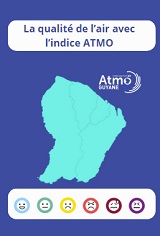Blada.com
lundi 30 juin
Boîtes aux lettres
Courrier des lecteurs
Petites annonces
Emploi / Formation
Covoiturage
Infos citoyennes
Infos citoyennes
05/04/23
Hantavirus : une étude sur le terrain après les quatre cas de 2022
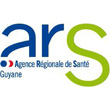 L’an dernier, quatre personnes ont été hospitalisées suite à une infection par ce virus transmis par les rongeurs. Une était décédée. Ce nombre élevé et l’évolution clinique plus favorable – il y avait eu sept hospitalisations dont quatre décès entre 2008 et 2021 – ont conduit l’ARS, Santé publique publique France, la Croix-Rouge française, l’Institut Pasteur de Guyane (IPG) et le centre hospitalier de Cayenne à mener une recherche active de cas dans les trois quartiers concernés par les cas diagnostiqués en 2022, à Rémire-Montjoly et Macouria. Aucun cas récent n’a été détecté, mais quatorze infections anciennes. Les résultats ont été présentés aux habitants, la semaine dernière.
L’an dernier, quatre personnes ont été hospitalisées suite à une infection par ce virus transmis par les rongeurs. Une était décédée. Ce nombre élevé et l’évolution clinique plus favorable – il y avait eu sept hospitalisations dont quatre décès entre 2008 et 2021 – ont conduit l’ARS, Santé publique publique France, la Croix-Rouge française, l’Institut Pasteur de Guyane (IPG) et le centre hospitalier de Cayenne à mener une recherche active de cas dans les trois quartiers concernés par les cas diagnostiqués en 2022, à Rémire-Montjoly et Macouria. Aucun cas récent n’a été détecté, mais quatorze infections anciennes. Les résultats ont été présentés aux habitants, la semaine dernière.
Début 2022, quatre patients infectés à l’hantavirus (virus Maripa, transmis par un rongeur peu commun en ville) ont été admis au Centre Hospitalier de Cayenne. La situation a été jugée sérieuse : au cours des quatorze années précédentes, seuls sept patients avaient été diagnostiqués ; quatre étaient décédés (lire la Lettre pro du 3 mai 2022). C’est pour mieux saisir la situation que plusieurs études ont été menées dans les mois suivants.
Une investigation téléphonique et des pièges
Tout commence par une investigation téléphonique menée par le service de veille et sécurité sanitaire de l’Agence régionale de santé (ARS). Cette investigation se fait directement auprès du patient si c’est possible où par l’intermédiaire d’un proche, ensuite des enquêtes environnementales menées par l’ARS accompagné de l’IPG (laboratoire des Interactions Virus-Hôtes) qui placent des pièges et capturent des rongeurs pour rechercher l’hantavirus. C’est systématiquement le cas après l’identification d’un cas d’hantavirus. C’est aussi l’occasion de proposer des solutions pour éviter d’autres contaminations.
Des résultats qui interpellent
Les résultats interpellent : les personnes touchées n’ont guère quitté leur quartier alors que la piste de contamination la plus sérieuse passe par la souris pygmée de Guyane, une petite variété marron réputée vivre dans des espaces ouverts comme les savanes ou la lisière des forêts. L’évolution clinique a également été moins défavorable qu’attendu : on a déploré un seul décès parmi les quatre patients signalés comme infectés l’an dernier, contre 4 sur 7 au cours de la période précédente. Les équipes spécialisées se sont alors demandé si d’autres cas peu graves et donc non signalés avaient existé autour des quatre premiers patients. Il a donc été décidé de rechercher activement des traces de contamination récentes dans l’entourage de ces cas, et avancer dans la compréhension de cette maladie et de sa circulation. Le projet de dépistage a été présenté aux élus des communes concernées.
Une enquête pour comprendre
Une enquête sérologique autours des quatre derniers cas se déroule donc de fin novembre à mi-décembre. Pendant deux semaines dans deux secteurs de Macouria, puis une semaine dans un quartier de Rémire-Montjoly, les équipes de la Croix-Rouge française effectuent des maraudes dans les trois quartiers, expliquent la maladie, proposent une prise de sang aux habitants, leur posent des questions, rendent les résultats individuellement en présence des médecins du CHC (UMIT), une fois ceux-ci connus. Sur les neuf cents personnes attendues, deux cent soixante-quatorze participent. Les analyses, effectuées par le centre national de référence (CNR) hantavirus à l’Institut Pasteur de Guyane, ne révèlent aucune infection récente, c’est-à-dire au cours des quatre derniers mois. En revanche, 14 personnes présentent les traces d’une infection plus ancienne. Aucune différence significative n’a été mise en évidence entre des personnes porteuses de marqueurs d’une infection ancienne (IgG) à hantavirus et les autres personnes enquêtées.
Une avancée majeure dans la compréhension de cette maladie
Il s’agit d’une avancée majeure dans la compréhension de cette maladie : réputée à l’origine comme étant de mauvais pronostic (près de 50% de décès), elle apparaît désormais comme pouvant donner des symptômes suffisamment faibles pour ne pas nécessiter hospitalisation, prélèvement biologique puis signalement. L’enquête permet aussi de montrer que le virus n’a pas non plus circulé massivement dans les quartiers touchés.
Une présentation des résultats aux populations concernées
Jeudi et vendredi, les résultats de l’étude ont été présentés aux habitants des quartiers concernés, qui sont venus nombreux. Il a été expliqué que l’étude ne semble pas indiquer de circulation particulière de l’hantavirus dans ces quartiers. Parmi ces cas anciens, aucun n’a semble-t-il dû être hospitalisé.
Un rappel des recommandations
Cette restitution a fourni l’occasion à Adrien Ortelli, chef de pôle Santé environnement à l’ARS, et pour l’équipe mobile santé environnement (Emse, successeur du projet Wash) de la Croix-Rouge française, de rappeler que les rats sont susceptibles de transmettre d’autres maladies graves, comme la leptospirose. Et de rappeler quelques précautions à prendre pour éviter de s’exposer au virus : chasser les rongeurs de chez soi, nettoyer la poussière avec de l’eau et/ou de la javel (plutôt qu’avec un balais, qui peut remettre en suspension des pathogènes),, et porter un masque, avant de nettoyer un sol qui ne l’a pas été depuis longtemps, pour éviter d’inhaler la poussière, ne pas hésiter à consulter son médecin en cas de forte fièvre.
 Last year, four people were hospitalized following an infection by this virus transmitted by rodents. One had died. This high number and the more favorable clinical evolution – there had been seven hospitalizations including four deaths between 2008 and 2021 – led the ARS, Public Health France, the French Red Cross, the Pasteur Institute of Guyana (IPG ) and the Cayenne hospital center to carry out an active search for cases in the three districts concerned by the cases diagnosed in 2022, in Rémire-Montjoly and Macouria. No recent cases were detected, but fourteen old infections. The results were presented to residents last week.
Last year, four people were hospitalized following an infection by this virus transmitted by rodents. One had died. This high number and the more favorable clinical evolution – there had been seven hospitalizations including four deaths between 2008 and 2021 – led the ARS, Public Health France, the French Red Cross, the Pasteur Institute of Guyana (IPG ) and the Cayenne hospital center to carry out an active search for cases in the three districts concerned by the cases diagnosed in 2022, in Rémire-Montjoly and Macouria. No recent cases were detected, but fourteen old infections. The results were presented to residents last week.
At the beginning of 2022, four patients infected with hantavirus (Maripa virus, transmitted by an uncommon rodent in town) were admitted to the Cayenne Hospital Center. The situation was considered serious: in the previous fourteen years, only seven patients had been diagnosed; four had died (read the Professional letter of May 3, 2022). It was to better understand the situation that several studies were carried out in the following months.
A telephone investigation and traps
It all starts with a telephone investigation conducted by the health monitoring and security service of the Regional Health Agency (ARS). This investigation is done directly with the patient if possible or through a relative, then environmental surveys carried out by the ARS accompanied by the IPG (laboratory of Virus-Host Interactions) which place traps and capture rodents to search for hantavirus. This is systematically the case after the identification of a case of hantavirus. It is also an opportunity to propose solutions to avoid other contaminations.
Results that challenge
The results are striking: the people affected have hardly left their neighborhoods while the most serious route of contamination passes through the Guyana pygmy mouse, a small brown variety known to live in open spaces such as savannahs or the forest edge. The clinical course was also less unfavorable than expected: only one death was reported among the four patients reported as infected last year, compared to 4 out of 7 during the previous period. The specialized teams then wondered whether other mild and therefore unreported cases had existed around the first four patients. It was therefore decided to actively search for traces of recent contamination in the surroundings of these cases, and to advance in the understanding of this disease and its circulation. The screening project was presented to the elected officials of the municipalities concerned.
A survey to understand
A serological survey of the last four cases is therefore taking place from the end of November to mid-December. For two weeks in two sectors of Macouria, then a week in a district of Rémire-Montjoly, the teams of the French Red Cross carry out patrols in the three districts, explain the disease, offer a blood test to the inhabitants, ask them questions, give the results individually in the presence of the doctors of the CHC (UMIT), once they are known. Of the nine hundred people expected, two hundred and seventy-four participated. The analyses, carried out by the hantavirus national reference center (CNR) at the Pasteur Institute in Guyana, do not reveal any recent infection, that is to say during the last four months. On the other hand, 14 people show traces of an older infection. No significant difference was demonstrated between people carrying markers of an old infection (IgG) with hantavirus and the other people surveyed.
A major advance in the understanding of this disease
This is a major advance in the understanding of this disease: originally reputed to have a poor prognosis (nearly 50% of deaths), it now appears to be able to give symptoms weak enough to do not require hospitalization, biological sampling and then reporting. The survey also shows that the virus did not circulate massively in the affected neighborhoods either.
A presentation of the results to the populations concerned
Thursday and Friday, the results of the study were presented to the inhabitants of the neighborhoods concerned, many of whom came. It was explained that the study does not seem pas indicate particular circulation of the hantavirus in these districts. Among these old cases, none has apparently required hospitalization.
A reminder of the recommendations
This restitution provided the opportunity for Adrien Ortelli, head of the environmental health unit at the ARS, and for the environmental health mobile team (Emse, successor to the Wash project) of the French Red Cross, to recall that rats are capable of transmitting other serious diseases, such as leptospirosis. And to remind you of a few precautions to take to avoid exposure to the virus: chasing rodents from your home, cleaning dust with water and/or bleach (rather than with a broom, which can suspension of pathogens), and wear a mask, before cleaning a floor that has not been cleaned for a long time, to avoid inhaling the dust, do not hesitate to consult your doctor in the event of a high fever.
Raccourcis


passer une petite annonce
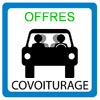
passer une annonce de covoiturage
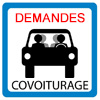

passer une annonce d’emploi

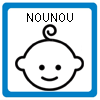
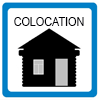
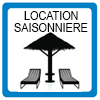
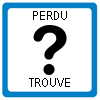
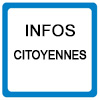
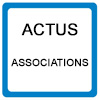
associations, postez vos actualités

participez au courrier des lecteurs
La Guyane c’est ici
La qualité de l’Air avec
ATMO
Photothèque

Lancements 2022
Vol 259 Ariane 5



